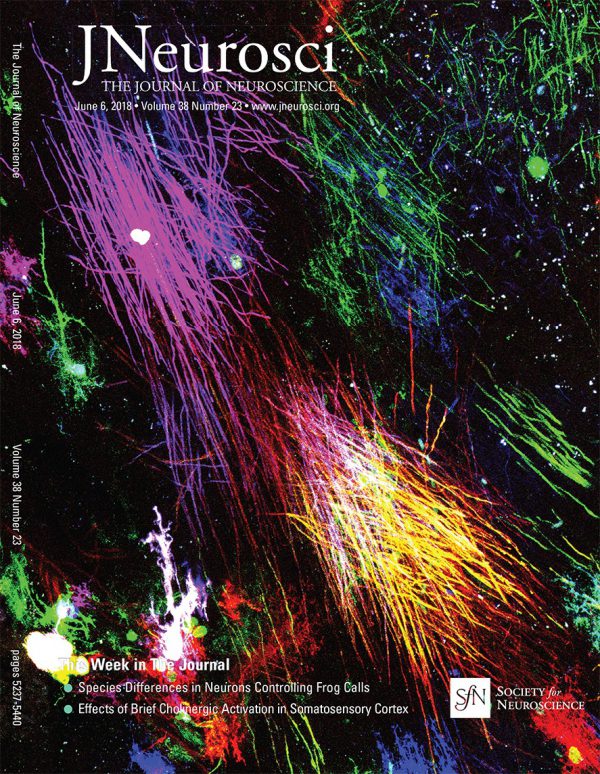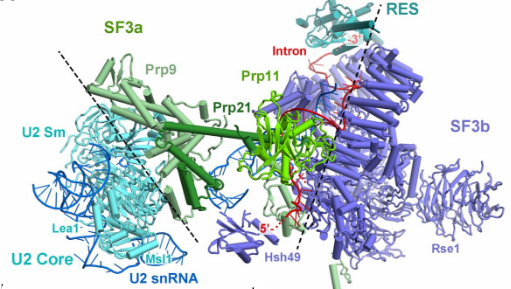Recently, researchers at the Lyon Cancer Research Center have demonstrated the potential of imaging technology to study oncology issues. Advanced imaging techniques can differentiate malignant cell populations and monitor the effectiveness of anticancer therapies. The study result is published in the Journal of Physical Review Letters, helping to design new therapeutic molecules and personalization of treatment. Despite a good understanding of the biology of cancer, 90% of experimental drugs…
New Article
Neuron: Whole-Brain Imaging of Mice during Behavior

In a recent study described in the journal Neuron, the Emily Macé and collaborators of the Botond Roska team demonstrated how functional ultrasound imaging can produce high-resolution full-motion images of the brain for specific behaviors in mice. This non-invasive technique has broad application prospects in ophthalmology, neurological and psychiatric diseases. “Functional ultrasound imaging produces higher resolution images, and is simpler, cheaper, and easier to use than functional magnetic resonance…
Cell: New Super-resolution Imaging Technology Developed to Reveal New Phenomena of Organelle Interaction

Li Dong, Ph.D., of the Institute of Biophysics, Chinese Academy of Sciences, and Eric Betzig and Jennifer Lippincott-Schwartz, Ph.D., of the Howard Hughes Medical Research Institute of the United States, published a research paper in Cell entitled “Visualizing intracellular organelle and cytoskeletal interactions at nanoscale resolution on millisecond”. This paper pioneered the grazing incidence structured light illumination super-resolution imaging technology (GI-SIM), which can perform high-speed, long-term, super-resolution imaging of intracellular…
Cell: New Intelligent Microscope Developed to Observe Post-Implantation Mouse Development

So far, the clearest picture of living embryos comes from zebrafish and fruit flies. Ten years ago, Philipp Keller, a physicist and biologist at the Jenice Research Institute in the Howard Hughes Medical Institute, and his colleagues developed the first “digital embryo” of zebrafish, in which the zebrafish was a transparent striped fish that is usually provided to scientists for research. They scanned the zebrafish embryos with a light sheet…
Science Advances: The Structure of IgM Revealed

In a new study, researchers from the University of Tokyo in Japan revealed the structure of a vital immune protein called immunoglobulin M (IgM) by using computer image analysis and modern electron microscopy imaging. It offers the possibility of developing more effective drugs for a range of diseases ranging from cancer to nervous system diseases for the future. The results of the study were published on Science Advances, entitled “The…
JCB: New Research Reveals the Internal Structure of Macrophages

We live in a world full of risks, many of which are invisible. Fortunately, we did not go this dangerous road alone. There are precious sentinel cells lying in our bodies, and every day they are fighting to keep us alive. The work of the human immune system is huge and complex. That’s why, despite decades of research, scientists are still working to reveal the full working principle. …
Immunity: New Antibody Analysis Method May Accelerate Rational HIV Vaccine Development

In a new study, researchers from the Scripps Research Institute in the United States proposed a faster way to analyze the results of experimental vaccines against HIV and other pathogens. Their new approach allows scientists to quickly assess the full spectrum of antibodies produced by individuals in response to a pathogen or vaccine and determine if these antibodies are likely to be effective against the pathogen. The results of the…
JNeurosci: New Method for the Development of Personalized Brain Stimulation Therapies Found

A study of epilepsy patients with transplanted electrodes has seen a change in brain activity caused by an electrical stimulus that has never been seen before. These findings were recently published in J Neurosci and have the potential to improve non-invasive stimulation for the treatment of psychiatric diseases. Repetitive transcranial magnetic stimulation (rTMS) has been increasingly used for the treatment of patients with depression and other poor reactions…
Nature: Inhibitors of Legionella Enzyme SdeA Designed

Antimicrobial resistance (AMR) is a major medical problem worldwide that affects human health and economic conditions. In a new study, Professor Ivan Dikic from the University of Frankfurt, Germany, together with his team found a new strategy to fight the bacteria. They revealed the mechanism of one Legionella and developed the first inhibitor. The relevant research was published online in Nature on May 23, 2018. As drug resistance continues…
Revealed Structures of the Fully Assembled Spliceosome before Activation

Professor Shi Yigong of the School of Life Sciences of Tsinghua University published the major research results on the assembly mechanism and structure of the splice body in the “Science” magazine. The paper entitled “Structures of the Fully Assembled Saccharomyces cerevisiae Spliceosome Before Activation” reports two completely assembled key conformations of the Saccharomyces cerevisiae spliceosome in the preactivated phase – Precursor pre-catalytic spliceosome (defined as “pre-B complex”) and pre-catalytic spliceosome…
